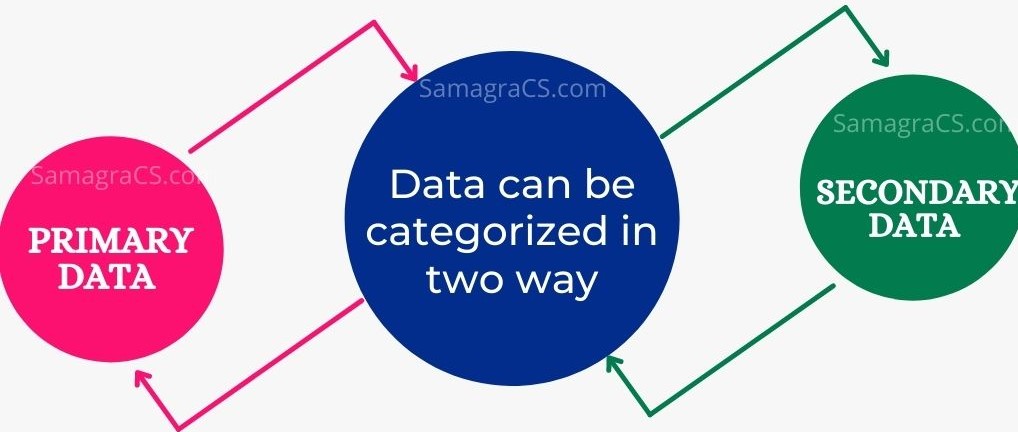data collection methods
Collecting research data
| ✰ There are various ways of collecting relevant data. |
| ✰ The researcher should select one of these methods of collecting data taking into account the nature of the investigation, scope and objective of inquiry, financial cost, availability of time, and the desired accuracy. |
Types of data in research:
1.Primary Data
2.Secondary Data

1.Primary Data
Meaning of primary data:
The primary data are those which are collected afresh and for the first time, and thus happen to be original in character.
2.Secondary Data
Meaning of secondary data:
The secondary data, on the other hand, are those which have already been collected by someone else and which have already been passed through the statistical process.
Data collection methods:
Primary and secondary data collection methods
1.Primary data collection methods:
| ✰ Primary data can be collected either through experiments or through survey. |
| ✰ If the researcher conducts an experiment, he will take some quantitative measurements (data). The data is analyzed further to test the hypothesis. |
In the case of a survey, data can be collected in any one of the following ways:
1• Observation method of data collection
2• Interview method of data collection
3• Questionnaire method of data collection
4• Schedules method of data collection
1. Observation method of data collection
| ✰ This method implies the collection of information by way of the investigator’s own observation, without interviewing the respondents. The information obtained relates to what is currently happening and is not complicated by either the past behaviour or future intentions or attitudes of respondents. This method is no doubt an expensive method and the information provided by this method is also very limited. As such this method is not suitable in inquiries where large samples are concerned |
2. Interview method of data collection
- Personal interview:
- Telephone interviews:
- Focus group Interview
Personal interview:
| ✰ The investigator follows a structured approach and the questions are pre-conceived. where output depends upon the ability of the interviewer to a large extent |
Telephone interviews:
| ✰ This method of collecting information involves contacting the respondents by telephone itself. It is used when the survey has to be accomplished in a very limited time. |
Focus group Interview:
| ✰ |
3. Questionnaire method of data collection
| ✰ A questionnaire consists of a set of questions presented to a respondent for answers. |
| ✰ Questionnaires are distributed to the respondents with a request to return after completing the same. |
| ✰ The questionnaire depends upon research objectives. For each objective or research question, list all the associated questions that a researcher wants to answer through the study. Then, the information required to answer them is listed and finally, the questions are listed for the questionnaire. |
| ✰ The respondents read the questions, interpret what is expected, and then write down the answers themselves. |
| ✰ It is the most extensively used method in various economic and business surveys. |
There are three basic types of questionnaires
- Closed-ended.
- Open-ended.
- Combination of both closed-ended and Open-ended.
Closed-ended questionnaire:
| ✰ Closed-ended questionnaires generally include multiple-choice questions or scale questions. This type of questionnaire can be administered to a large number of respondents or a sample size. As there is a set format, the data generated from questionnaire can be easily fed into a computer system for the purpose of analysis. |
Open-ended questionnaire:
| ✰ Open-ended questionnaires offer the flexibility for respondents to answer in their own words. It may leave a blank section to write an answer. Closed-ended questionnaires might be used to find out how many people use metro rail service in New Delhi, but open-ended questionnaires might be used to find out what people think about the quality of service. |
Combination of both closed-ended and Open-ended.
| ✰ In this method, it is possible to find out how many people use a service and what they think of the service in the same form. The combined questionnaire may begin with a series of closed-ended questions, with boxes to tick or scales to rank, and then finish with a section of open-ended questions or more detailed responses. |
4. Schedules method of data collection
| ✰ Under this method, the enumerators are appointed and given training. They are provided with schedules containing relevant questions. These enumerators go to respondents with these schedules. Data are collected by filling up the schedules by enumerators on the basis of replies given by respondents. Much depends upon the capability of enumerators so far as this method is concerned. |
2.Collection of Secondary data:
Usually, Secondary data are available in:
- various publications of the central, state are local governments.
- various publications of foreign governments or of international bodies and their subsidiary organizations.
- technical and trade journals.
- books, magazines and newspapers
- reports and publications of various associations connected with business and industry, banks, stock exchanges, etc.
- reports prepared by research scholars, universities, economists, etc. in different fields
- Public records and statistics, historical documents, and other sources of published information.
You Should Learn Processing and Analysing Data for Better Performance
You should learn previous year solution on this topic. GO Below ☟
| Research Content : |
- Introduction of Research
- Objective of Research
- Desirable Motivation
- Characteristics of research
- Positivism or postpositivism
- Classification of research
- Fundamental research
- Applied research
- Difference between fundamental and applied research
- Quantitative research
- Qualitative research
- Descriptive research
- Correlational research
- Exploratory research
- Explanatory research
- Experimental Research
- True experimental VS Quasi-experimental
- Inductive Research
- Deductive Research
- Inductive Research VS Deductive Research
- Conceptual Research
- Empirical Research
- Conceptual Research VS Empirical Research
- Structured Research
- Unstructured Research
- Ex-post facto Research
- Historical Research
- Analytical research
data collection methods
